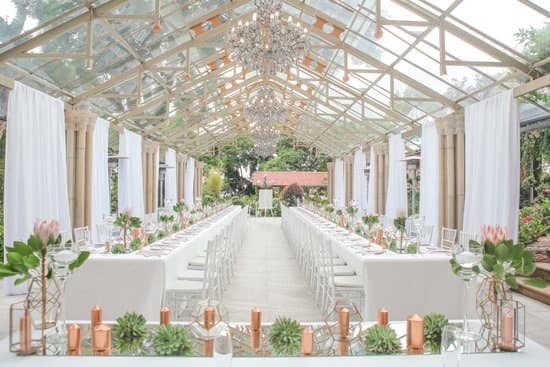Wedding cakes are a central element of any wedding celebration, and learning how to bake a wedding cake can be a rewarding and impressive feat. The process involves careful planning, attention to detail, and an understanding of the significance behind this cherished tradition. From selecting the perfect flavor to creating a stunning design, baking a wedding cake is a labor of love that can make a lasting impression on every guest in attendance.
The wedding cake is not just a delicious dessert; it holds great symbolic value in the ceremony. It represents the couple’s commitment to each other and their shared future. As such, it is important for the cake to not only taste amazing but also reflect the style and personality of the newlyweds. With careful planning and precise execution, you can create a beautiful centerpiece that will leave an unforgettable mark on the special day.
In this article, we will explore the step-by-step process of baking your own wedding cake. From selecting the perfect flavor and filling to transporting and assembling the finished product at the venue, we will provide you with all the information you need to master this art form.
Whether you are an experienced baker or looking to try your hand at something new, creating your own wedding cake can be a truly gratifying experience that adds a personal touch to your big day.
Selecting the Perfect Cake Flavor and Filling
When it comes to baking a wedding cake, one of the most important decisions you’ll make is selecting the perfect flavor and filling. The flavor of your cake sets the tone for the entire dessert, so it’s important to choose something that you and your guests will love.
Consider flavors that are timeless and universally appealing, such as vanilla, chocolate, or lemon. Additionally, don’t be afraid to get creative with unique flavor combinations like raspberry and almond or coconut and lime.
In addition to choosing a delicious cake flavor, selecting the right filling is essential for adding moisture and complexity to your wedding cake. Popular fillings include fruit preserves, flavored buttercreams, and rich chocolate ganache. When deciding on a filling, it’s important to consider how well it complements the chosen cake flavor. For example, a light lemon cake might pair perfectly with a tangy raspberry filling, while a dense chocolate cake could be elevated by a creamy peanut butter filling.
| Cake Flavor | Popular Fillings |
|---|---|
| Vanilla | Fruit Preserves |
| Chocolate | Flavored Buttercreams |
| Lemon | Rich Chocolate Ganache |
Gathering the Necessary Ingredients and Equipment
Ingredients and Measurements
Before beginning the process of baking a wedding cake, it is crucial to gather all the necessary ingredients and measure them accurately. This includes flour, sugar, eggs, butter, baking powder, salt, vanilla extract, and any other flavorings or extracts needed for the chosen cake recipe. Additionally, it’s important to have the correct measurements for each ingredient to ensure the perfect texture and taste of the cake layers.
Baking Equipment
In addition to the ingredients, it’s essential to gather all the required baking equipment. This includes cake pans in various sizes (depending on the desired tiered cake design), a stand mixer or handheld electric mixer, mixing bowls, a rubber spatula, parchment paper, and a wire cooling rack. It’s also important to have a serrated knife for leveling the cake layers once they are baked.
Sourcing Specialty Items
For some wedding cake recipes, specialty items such as fondant or gum paste may be required for specific decorating techniques. It’s important to ensure that these items are readily available before starting the baking process.
If using fondant for covering the cake tiers, additional tools such as a fondant smoother and rolling pin will also be necessary. Planning ahead and sourcing these specialty items in advance will help ensure a smooth and successful baking experience when creating a beautiful wedding cake.
Step-by-Step Instructions for Baking the Cake Layers
Baking the perfect cake layers is a crucial step in creating a stunning wedding cake. Follow these step-by-step instructions to ensure that your cake layers turn out moist, flavorful, and perfectly baked:
- Preheat your oven to the temperature specified in your recipe. It’s important to have the oven at the right temperature before you begin mixing your batter.
- Prepare your cake pans by greasing them with butter or non-stick cooking spray, then lining the bottoms with parchment paper. This will ensure that your cake layers can be easily removed from the pans without sticking.
- In a large bowl, combine your dry ingredients such as flour, baking powder, and salt. Use a whisk to mix them together thoroughly, ensuring that there are no lumps.
- In a separate bowl, cream together butter and sugar until light and fluffy. Add the eggs one at a time, mixing well after each addition. Then add vanilla extract or any other flavorings as per your recipe.
- Gradually add the dry ingredients to the wet mixture, alternating with milk or buttermilk. Mix until just combined – overmixing can result in a tough cake.
- Divide the batter evenly among the prepared cake pans, smoothing the tops with a spatula to ensure an even bake.
- Bake in the preheated oven for the time specified in your recipe or until a toothpick inserted into the center of each cake comes out clean.
- Allow the cakes to cool in their pans for 10-15 minutes before turning them out onto wire racks to cool completely.
Following these steps will ensure that you have perfectly baked cake layers for constructing your wedding cake. Pay attention to details like mixing times and baking temperatures for best results on this crucial aspect of baking a wedding cake.
Tips for Creating a Sturdy and Stable Cake Structure
When it comes to creating a sturdy and stable cake structure for your wedding cake, there are several tips and techniques that can help ensure your masterpiece stands tall and proud on the big day. Here are some useful tips to keep in mind:
- Use proper support: Whether you choose to use cake boards, dowels, or pillars, it’s crucial to provide adequate support for each layer of your cake. This will prevent the layers from collapsing or sliding during transport or display.
- Level your cakes: Before stacking the layers, make sure each one is level to avoid any tilting or shifting once they are assembled. A cake leveler or a long serrated knife can help achieve a smooth and even surface.
- Chill between layers: After applying the filling and stacking each layer, consider chilling the cake for a short period. This will help firm up the structure and make it easier to handle when adding more layers or applying frosting.
In addition to these foundational tips, it’s important to consider the weight and density of your chosen cake recipe. Some cake batters may be too heavy for multi-tiered designs, so be sure to select recipes that are suitable for stacking. With these guidelines in mind, you can feel confident in creating a stable foundation for your wedding cake that will impress both visually and structurally.
Making and Applying the Perfect Frosting
After successfully baking the cake layers, the next crucial step in creating a spectacular wedding cake is making and applying the perfect frosting. The frosting not only adds flavor to the cake but also plays a significant role in the overall appearance of the finished product.
There are various types of frostings to choose from, including buttercream, fondant, ganache, and cream cheese. Each type has its own unique characteristics, so it’s important to select one that complements the flavor of your cake and suits the overall design of your wedding.
Once you have chosen the perfect frosting for your wedding cake, it’s time to apply it flawlessly. Start by crumb coating the cake with a thin layer of frosting to seal in any loose crumbs. This will create a smooth base for the final layer of frosting.
Use a straight-edged spatula to evenly spread the frosting over each layer of the cake, ensuring that it is level and free from air bubbles. Take your time with this step, as a well-frosted cake will provide an ideal canvas for decorating.
When applying frosting to a multi-tiered wedding cake, it’s essential to ensure that each tier is level and centered on top of one another. This will create a stable structure and prevent any leaning or tilting during transportation and display at the wedding venue. Additionally, consider using dowels or support straws between each tier to provide added stability.
| Wedding Cake Frostings | Tips for Applying Frosting |
|---|---|
| Buttercream | Choose a high-quality butter for a rich flavor |
| Fondant | Knead fondant thoroughly before rolling it out |
| Ganache | Cool ganache until thickened but still pourable before applying to the cake |
| Cream Cheese | Ensure that cream cheese frosting is kept refrigerated until shortly before serving |
Decorating the Wedding Cake With Style and Elegance
Choosing the Right Design
When it comes to decorating a wedding cake, the design is crucial. The first step in creating an elegant and stylish wedding cake is to choose the right design that fits the theme of the wedding.
Whether it’s a traditional tiered cake, a modern and minimalist look, or a rustic naked cake, the design should reflect the couple’s personality and style. It’s also essential to consider factors such as the color scheme, floral arrangements, and overall aesthetic of the wedding venue.
Using Decorative Elements
Adding decorative elements to the wedding cake can elevate its style and elegance. From delicate sugar flowers and edible pearls to intricate piping and hand-painted details, there are countless ways to adorn a wedding cake. For couples looking for a more personalized touch, incorporating elements that represent their hobbies, interests, or cultural backgrounds can make the cake even more meaningful.
Finishing Touches
The finishing touches are what truly make a wedding cake stand out. Whether it’s adding a touch of metallic shimmer with edible gold leaf or incorporating unique textures like marble or watercolor effects, these details can take the cake from beautiful to breathtaking. Additionally, carefully selecting a stunning cake stand or display table can enhance the overall presentation of the wedding cake.
By following these tips for decorating a wedding cake with style and elegance, couples can ensure that their dessert not only tastes delicious but also serves as a stunning centerpiece at their special celebration. Mastering the art of how to bake a wedding cake involves attention to detail and creativity in every aspect of its creation.
Transporting and Assembling the Finished Cake at the Wedding Venue
After putting in all the hard work of baking, frosting, and decorating your wedding cake, the next critical step is safely transporting it to the wedding venue and assembling it on-site. This final stage is crucial to ensure that your masterpiece arrives intact and looks as beautiful as when you finished it in your kitchen. Here are some tips for successfully transporting and assembling your wedding cake.
First, when it comes to transporting the cake, it’s essential to have a sturdy and reliable cake carrier that will keep your creation secure during transit. Make sure that the vehicle you’re using has a flat surface where the cake can be placed securely and won’t slide around during transport. Additionally, drive carefully and avoid sudden stops or turns to prevent any damage to the cake.
Once you arrive at the wedding venue, it’s time to assemble the tiers of the cake into one stunning display. It’s advisable to have someone assist you with this process, especially if you are working with multiple tiers.
Use a stable surface for assembly, such as a table or a designated cake stand, ensuring that each tier is level before stacking them together. Finally, carefully add any decorative elements like fresh flowers or cake toppers once the tiers are assembled to complete the picture-perfect look for your wedding cake.
Conclusion
In conclusion, mastering the art of baking a stunning wedding cake is no easy feat, but with the right techniques and a lot of practice, it is certainly achievable. The significance of the wedding cake cannot be understated, as it serves as a centerpiece at the reception and symbolizes the sweet beginning of a couple’s new life together.
By carefully selecting the perfect cake flavor and filling, gathering the necessary ingredients and equipment, following step-by-step instructions for baking the cake layers, creating a sturdy structure, making and applying the perfect frosting, and decorating with style and elegance, you can create a masterpiece that will impress all your guests.
One of the key factors in successfully baking a wedding cake is attention to detail. From measuring ingredients accurately to ensuring the cake layers are level and evenly baked, each step plays an important role in achieving a professional result. Additionally, understanding how to work with different types of frostings and decorations will help you create a visually stunning confection that not only looks beautiful but tastes delicious as well.
Ultimately, the process of baking a wedding cake requires patience, practice, and passion. With dedication and creativity, you can master this art form and create memorable experiences for brides and grooms on their special day. Whether you are an aspiring professional baker or someone who wants to make their own wedding cake for a loved one’s celebration, following these guidelines will help you achieve success in creating a stunning wedding cake that will be remembered for years to come.
Frequently Asked Questions
How Far in Advance Should You Bake a Wedding Cake?
The ideal time to bake a wedding cake is about 2-3 days before the event. This allows enough time for the cake to cool, be frosted, and decorated without feeling rushed. Baking in advance also gives you the opportunity to make any adjustments if needed, ensuring that the cake turns out exactly as planned on the big day.
How Hard Is It to Bake a Wedding Cake?
Baking a wedding cake can be challenging due to its size and decorative requirements. It requires careful planning, precise measurements, and the ability to handle large quantities of ingredients. Additionally, creating multiple tiers or intricate designs adds complexity to the process. However, with patience and practice, it is definitely achievable for those who enjoy baking.
What Makes a Wedding Cake Different From Regular Cake?
A wedding cake differs from a regular cake in various ways. Firstly, it is often larger and comprises multiple tiers to accommodate the number of guests at a wedding. Secondly, wedding cakes are typically intricately decorated to suit the theme or style of the event.
Additionally, wedding cakes may have specific flavors or fillings chosen by the couple to make it more special. The overall design and presentation of a wedding cake also tend to be more formal than that of a regular cake.

I have been involved in marriages for over 20 years helping couples and singles understand more about them.





